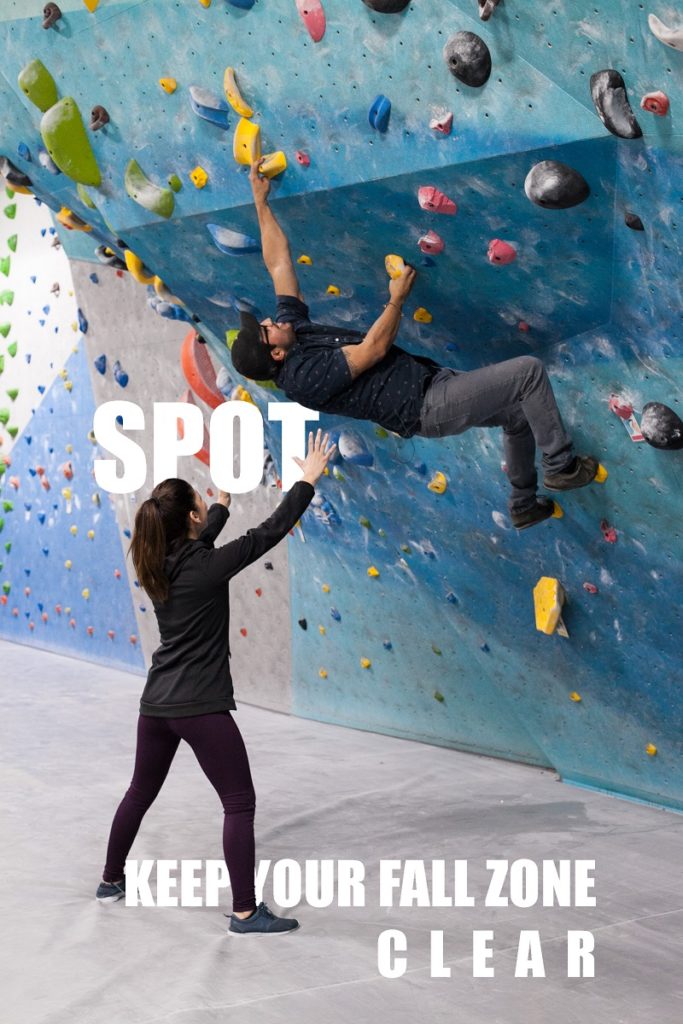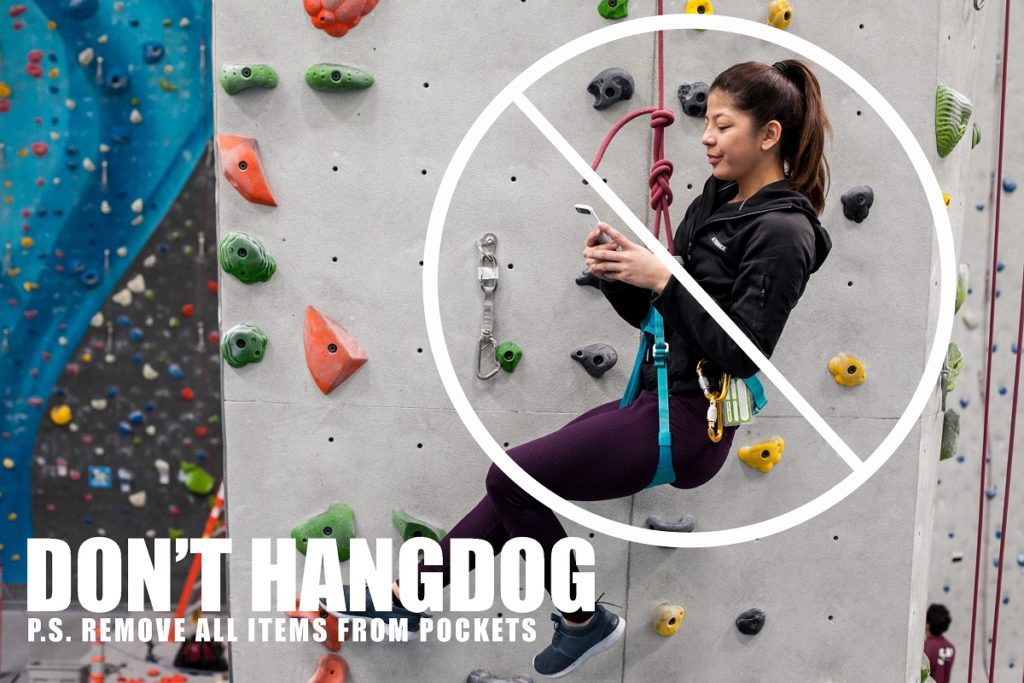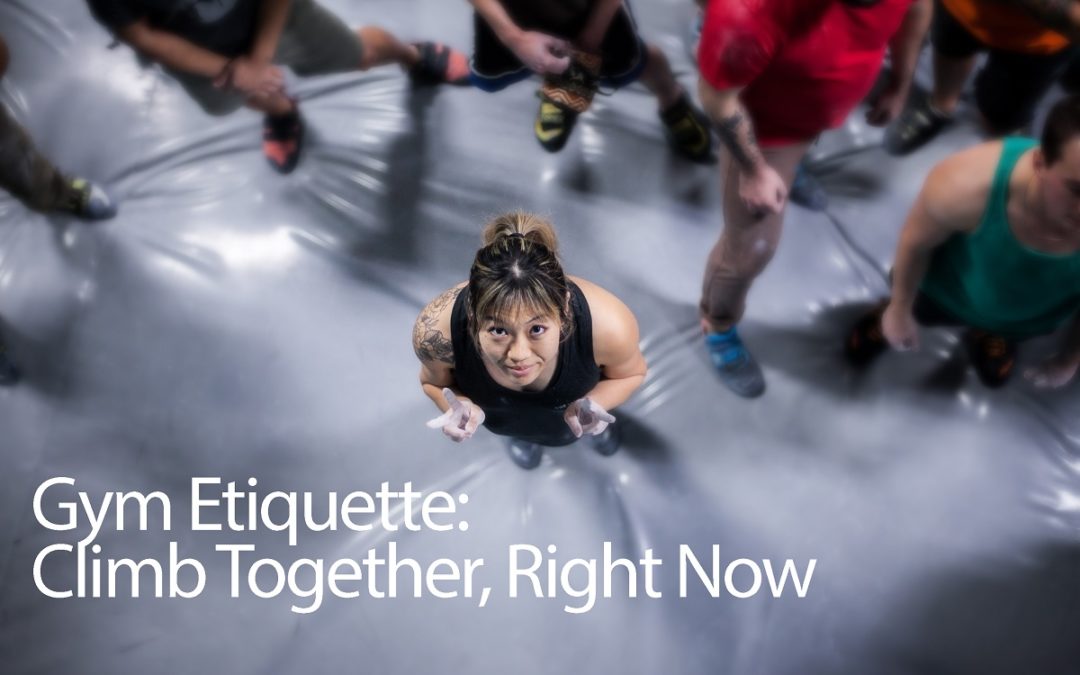words by Lauren Irvine
With climbing becoming more mainstream as a fun fitness endeavor by the day, combined with the rush of New Year’s resolutioners determined to try something new (good for you!), we’ve seen a rush of new people coming to pull plastic at Sender One. And we welcome each and every one of you and are so stoked you’re here!
This is a prime opportunity to provide some gentle reminders of climbing gym etiquette. Climbers as a whole are a laid-back community, always happy to welcome new people into the fold, but these rules exist primarily for safety--both your own and other’s--as well as to ensure a friendly environment for everyone.
Bouldering
In the seeming free-for-all zone of the bouldering walls, it’s every climber for themselves, right? Well, no. While it may seem like you’re alone on the wall, cranking on that crux affects the climbers below and around you. Here are our tips for safety and spatial awareness in the bouldering area:
- Pay attention to other climbers’ projects, especially if they intersect with yours. If someone’s on a problem that comes close to or crosses yours, wait to start until they’ve finished their attempt. Oftentimes, you can get in with a group working on the wall and take turns climbing and spotting each other. If you start climbing and someone starts a problem that places them over you, make your presence known!
- Keep the fall zone clear. That doesn’t just mean your person--we have crashpad couches for a reason!--but also water bottles, chalk bags, shoes, etc. Any stuff in the way can potentially make a boulderer’s fall unsafe--imagine breaking an ankle because you fell and landed on someone’s bottle (personally witnessed in the gym!).

- Don’t spray beta, or give unsolicited advice about a problem. Everyone’s climbing style is different, and part of the fun/challenge is figuring out how to solve the problem. Exception: if someone asks, advise away! And commenting on the awesomeness of a problem is always allowed.
- Wearing headphones? Keep the volume low enough that you can be aware of activity around and under you, especially if someone’s trying to talk to you.
- Warn onlookers before trying something crazy, like a difficult dynamic move like a dyno or a sketchy crux with weird positioning.
- Spot. When bouldering, having a spotter is always a fantastic idea. Hold out your arms with palms up and flat, aiming for the lower back--you don’t want to catch the climber, but redirect them into a safe space--and keep an eye out for how he or she might fall. This can help prevent the climber and onlookers from being injured. You’ll be amazed how much more confidently and comfortably you’ll climb knowing someone’s literally got your back!
- Accidentally rotate or loosen a hold? Ask a Sender One staff member to fix it before anyone else hops on the problem. Loose holds aren’t safe for anyone.

Top Rope and Lead Climbing
The rules aren’t drastically different once you move to the realm of the big walls--in fact, all of the rules for bouldering are applicable to the rope walls--but a few dozen feet and meters of rope adds some new things to remember for both the belayer and the climber:
- Give some space. There are two types of roped gym climbing: lead and top rope. There are differences between the climbing styles, but a major difference is falling. Lead climbers can fall anywhere from 5 to 25 feet in the gym, and we don't want any collisions! Regardless of top roping or lead climbing, always give lead climbers at least 1 quickdraw of space when climbing. That means the closest you climb to a lead climber is one empty column of clips!
- Don’t hangdog. If the gym is busy (and even if it’s not), be aware that there might be others who probably will want to try a route on your rope, so don’t run laps on the route or spend 15 minutes on the crux.

- Lead climbers: watch your rope. Since you’ve probably got a heap of rope that you drag around on a tarp, try to be conscious of where it ends up. You don’t want people lowering themselves right on top of your climber’s literal lifeline.
- Keep your frustration at a reasonable volume. We get that you may have to be loud to communicate with your belayer (safety!) but loud groaning, swearing, or shouting harshes the communal zen vibe we’re trying to keep up.
- See someone climbing unsafely? We’re talking an upside-down GriGri, tying in wrong, and so on: you have free rein to politely approach the climber/belayer, inform them that their setup is unsafe, and offer to help correct it. Otherwise, inform a Sender One staff member who will assess the situation.
But the number one rule of climbing etiquette, which you’ve probably noticed reiterated over and over again in both these lists, is simple: be aware. As long as you’re aware of your surroundings and aware of your fellow climbers--along with some respect, politeness, and friendliness--then you’re guaranteed to have a great time sending at Sender One. Don't forget to pick up a "Do's and Don'ts Cheatsheet" at our front desk!

